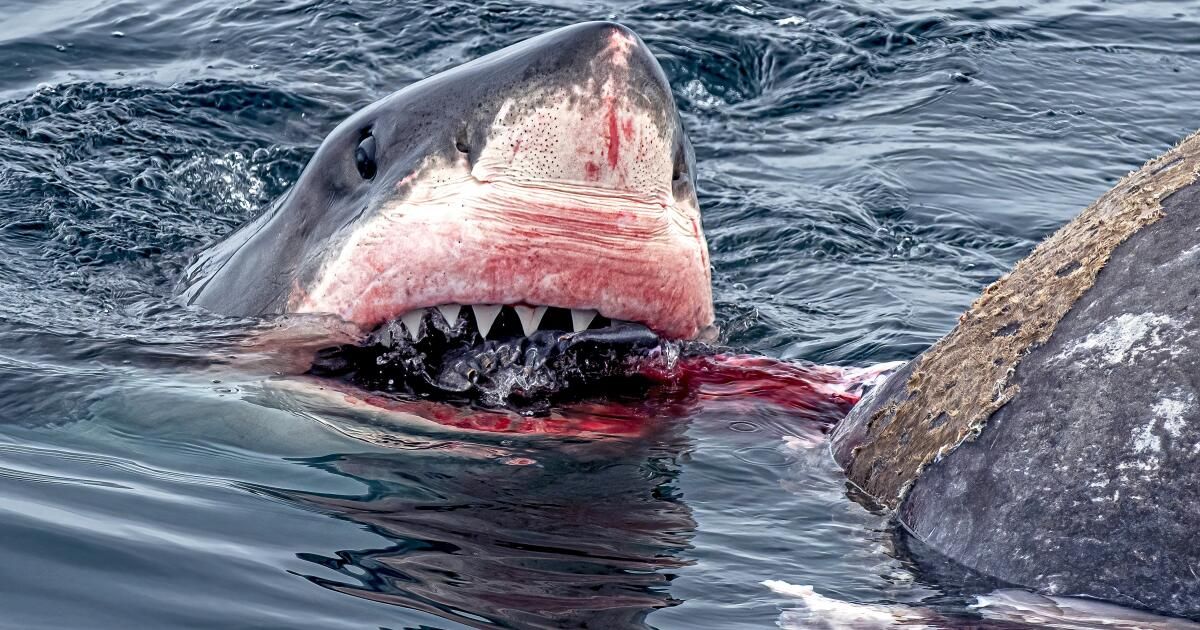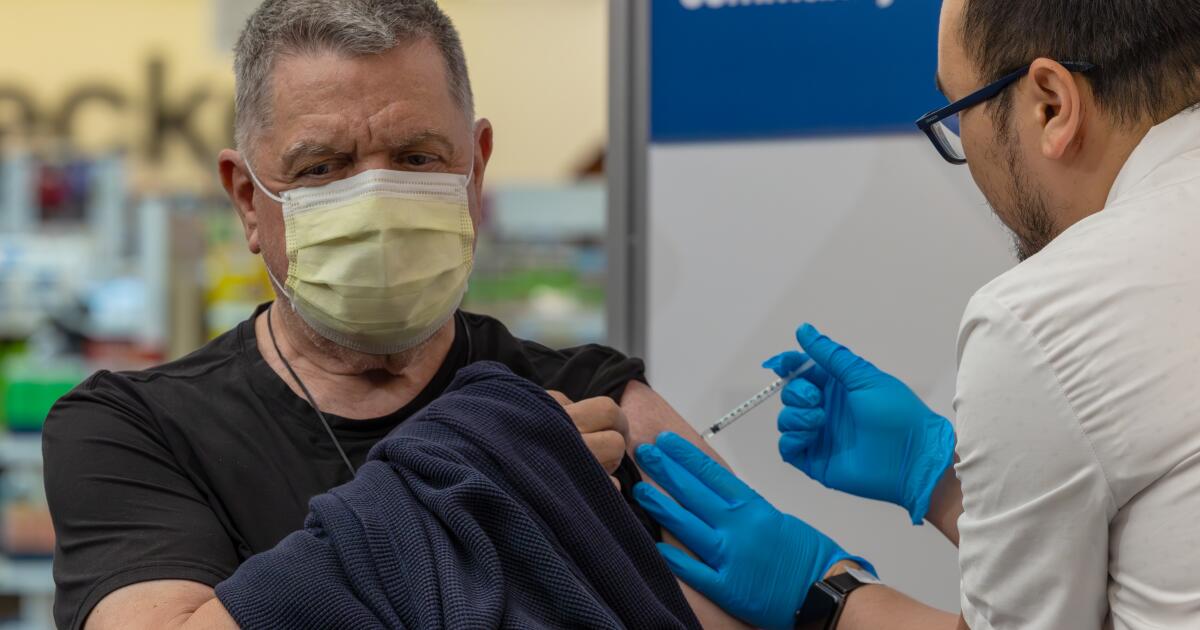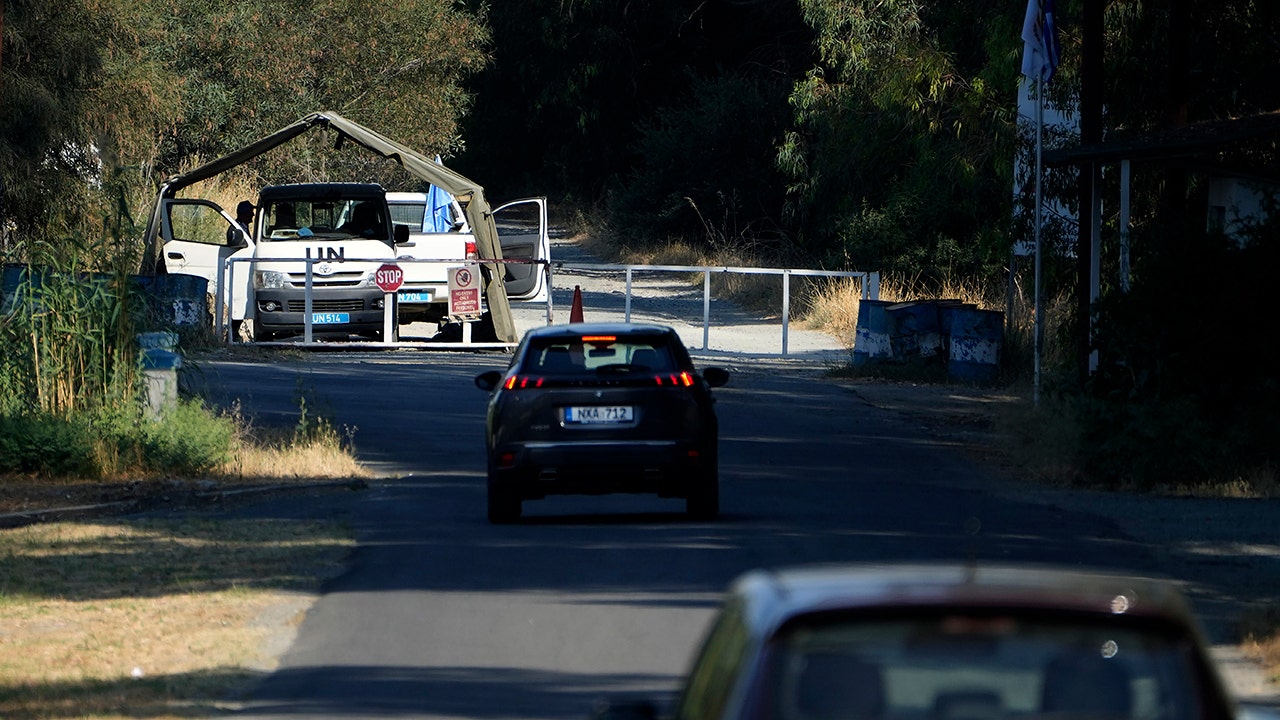A whale watching tour had the opportunity to take a once-in-a-lifetime photo when they spotted a rare great white shark feeding on an elephant seal about 30 miles west of Santa Barbara.
The group of about 50 people was aboard the Condor Express, which runs daily whale-watching excursions in the Santa Barbara Channel, according to Capt. Dave Beezer, who has worked for the company for nearly 20 years.
On Aug. 30, the group spotted the floating carcass of an elephant seal about 14 miles off the coast of Gaviota, and Beezer knew he had to stay in the area, he said. The seal was missing its head, so he thought it might be a predator. Shortly afterward, a 16-foot adult great white shark emerged from the water and began feeding on the carcass.
The Condor Express whale watching tour near Santa Barbara spotted a great white shark feeding on an elephant seal on August 30.
(Robert Perry/CondorExpressPhotos.com)
“It was sinking its jaws into the side of the seal and pulling out large chunks and then disappearing out of sight,” he said.
Great white sharks, sometimes called white sharks (Carcharodon carcharias), are the species featured in the classic 1975 film “Jaws.” The Northeast Pacific great white shark population is increasing and is not at risk of extinction in U.S. waters, according to the National Oceanic and Atmospheric Administration.
The shark circled the boat and surfaced four or five times to bite the seal. Robert Perry, who has been photographing the ocean since the late 1960s, was also on board, acting as the Condor Express's staff photographer. The only time he took pictures of great whites was when they were swimming around or under a dead whale, so they were not fully visible.
Perry managed to capture several images of the great white shark feeding.
“It was a once-in-a-lifetime opportunity and absolutely mind-blowing,” Perry added. “It was the shot of a lifetime.”
Beezer said he has seen a great white feed about four or five times in his life. He stressed the importance of the great white to the region. Because San Miguel Island serves as a seal breeding ground, the area has some of the largest seal populations in the world. Great whites keep some of those populations in check, he said.
“It’s not this mindless killing machine that should scare us all,” he added. “It’s a calculating predator that plays an important role in the ocean ecosystem.”












